
OCDD Stakeholder Meeting
What Happens When the
COVID PHE Ends?
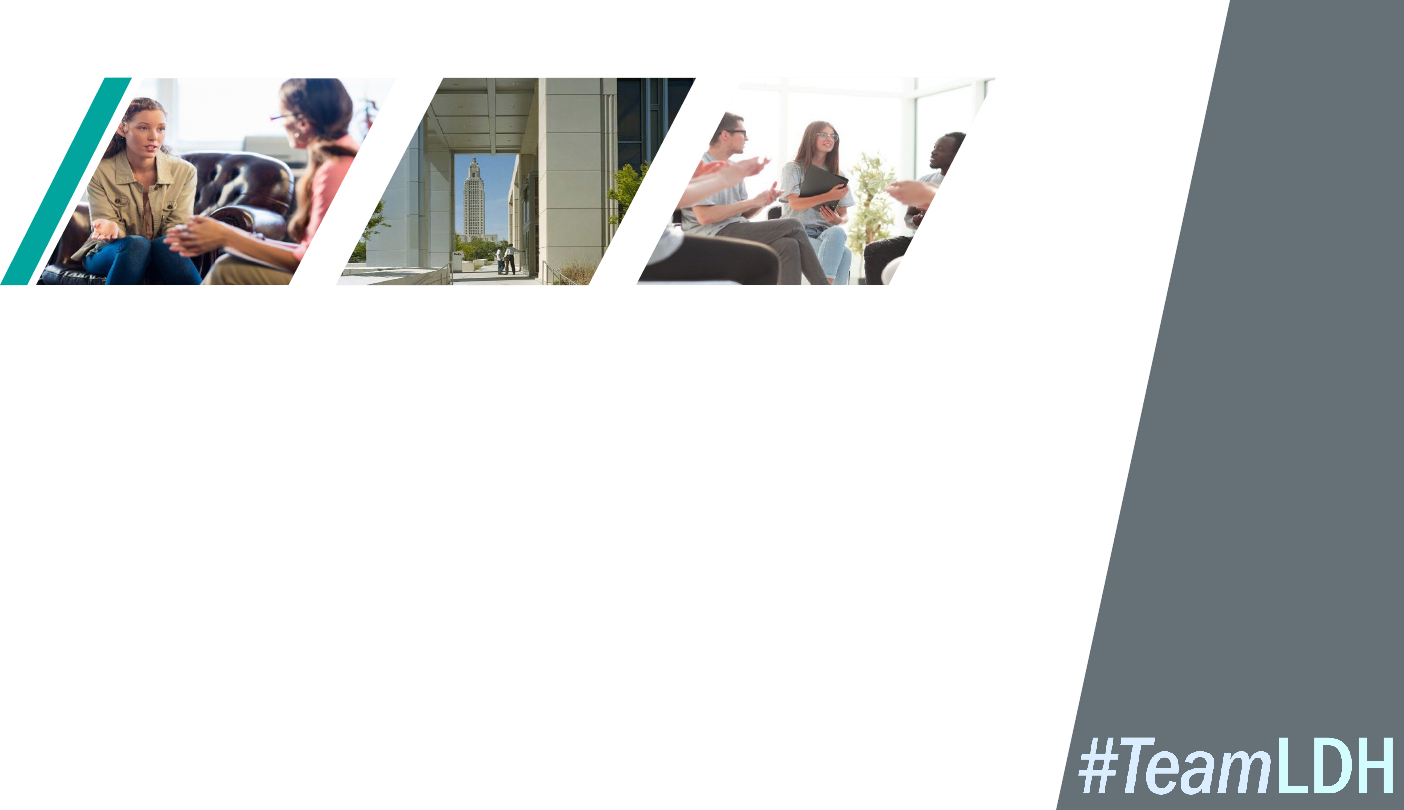
Presentation Overview
• OCDD HCBS Waiver Requirements Before, During, and After
COVID Public Health Emergency
• Medicaid Eligibility PHE Unwind
• Update on HCBS Settings Rule
• Introduction to Technology Supports with Remote Features
• NCI Survey Information
• LDH Business Plan Update

OCDD Waiver Requirements Before,
During, and After COVID-19 PHE

OCDD Waiver Services
• OCDD has 4 Home and Community Based
Waivers, (New Opportunities Waiver or NOW,
Residential Options Waiver or ROW, Supports
Waiver, and Children’s Choice Waiver)
• States complete a “waiver application” with all rules
and regulations, that must meet CMS requirements.
• Any changes to this require a “waiver
amendment”
• Some waiver activities are also regulated by
licensing and certification and through Medicaid
State Plan services
.

Background on Exceptions
• Appendix K Exceptions: may be used by states
during an emergency situation to request
changes to the waivers as part of an emergency
response to keep people safe
• Section 1135 of the Social Security Act: may be
used during emergency situations to temporarily
waive or modify certain Medicare, Medicaid, and
Children’s Health Insurance Program (CHIP)
requirements

Current Status of Exceptions
• Federal Public Health Emergency (PHE) declaration
for COVID will end on May 11, 2023.
• Exceptions approved through Appendix K will
end “6 months after the end of the PHE”
• Exceptions approved through 1135 must end at
the time the PHE ends.
• OCDD has made some changes to waiver services
from lessons learned during COVID based on
feedback from focus groups.
• The following slides will discuss the approved
changes and describe before, during, & after COVID.

Waiver participant and direct support
workers living in the same home
Timing What’s in the Waiver?
Before
COVID
PHE
Not able to live in the same home.
During
COVID
PHE
Were able to live in the same home.
6 Months
After
COVID
PHE
If paid worker is family member living in the same
home, refer to “Family as Paid Caregiver” slide. If paid
worker is not a family member, not able to live in the
same home.

Family as Paid Direct Support Worker
Timing What’s in the Waiver?
Before
COVID PHE
Family members living in the same home not able to be
paid direct support worker (DSW). No restriction for
family members not living in the same home.
During
COVID PHE
Family members, including legally responsible
individuals (LRIs), able to serve as paid DSW with no
restrictions.
6 Months
After COVID
PHE
Family members, including LRIs, able to continue to be
paid DSWs, with additional safeguards / guidelines
(refer to next slide).

Family as Paid Direct Support Worker
Guidelines
• If not living in the same home, no restrictions.
• If living in the same home, paid services can be provided
up to a maximum of 40 hours per week per family
member, based on approved hours.
• Must meet same qualifications and expectations as non-
family member direct support workers.
• All family members serving as paid DSWs will be required
to review a training and sign an attestation. Training will
consider cultural differences in families.

Family as Paid Direct Support Worker
Guidelines
• Must be in the “best interest of the individual” and
individual receiving services must agree.
• For LRIs, must meet “extraordinary care” criteria for
paid services.
• All must be documented in the Plan of Care.
• Self-Direction: may not be the authorized
representative/employer and be a paid direct support
worker.

Use of Virtual Visits for Support
Coordination Services
Timing What’s in the Waiver?
Before
COVID PHE
Support coordination (SC) services required to be in-
person with no allowance for virtual visits
During
COVID PHE
Virtual visits allowed for all SC services
After COVID
PHE
ROW, SW, CC: SC guidelines start 6 months after
PHE
NOW: SC guidelines start at end of PHE

SC Virtual Visit Guidelines
• The individual/family; the SC; and the applicable provider
agencies are in agreement that a virtual visit is in the best
interest of the individual, and
• Legally responsible individual(s) or family member(s) living
in the home are not paid DSW(s), and
• No instances of significant incidents, changes, or concerns
in the past two years
• At least 2 in-person visits must occur annually.

Signature on Annual Plan of Care
Timing What’s in the Waiver?
Before
COVID PHE
“Hard signature” required on the Plan of Care
(POC) document, as well as other documents
completed during the annual meeting.
During
COVID PHE
Verbal approval allowed for all documents
6 Months
After COVID
PHE
“Hard signature” required for POC documents
completed during annual meeting. Allowance for
electronic signature on other documents, although
will not be required.
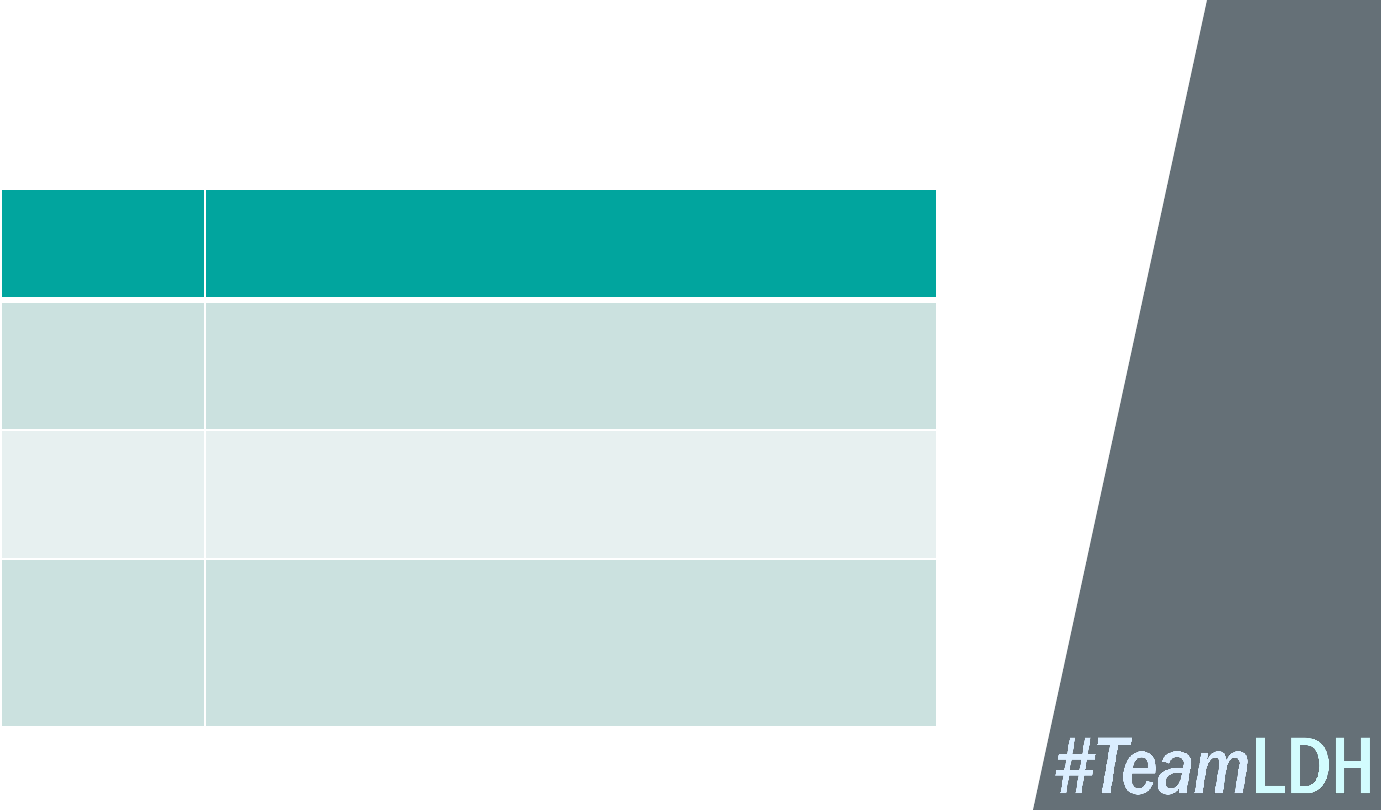
16 Hour Rule
Timing What’s in the Waiver?
Before
COVID
PHE
DSWs not allowed to work over 16 hours in a 24
hour period, without approval of an emergency
situation.
During
COVID
PHE
DSWs have been allowed to work over 16 hours
in a 24 hour period.
6 Months
After
COVID
PHE
The guidelines for working over 16 hours in a 24
hour period have been modified (refer to next
slide).

16 Hour Rule Guidelines
• No DSW should be regularly or routinely scheduled
more than 16 hours in one day.
• DSW should only work over 16 hours in a 24 hour
period for unplanned situations when a paid staff or
natural support is not available and the person
cannot be left unsupported.
• No prior approval is needed and no payments will
be blocked; however, there will be review after the
fact

Sharing of Direct Support Workers
Across Waivers
Timing What’s in the Waiver?
Before
COVID
PHE
Individuals receiving a different waiver (ROW, NOW,
or CC Waiver) were not able to “share” DSWs across
the different waivers.
During
COVID
PHE
Individuals receiving a different waiver were able to
share DSWs across waivers.
6 Months
After
COVID
PHE
Individuals will be able to share direct support services
across two waivers in the NOW, ROW, and Children’s
Choice Waiver.

Monitored In-Home Caregiving
Service
Timing What’s in the Waiver?
Before
COVID PHE
This service, also called MIHC, was not available as
a service.
During
COVID PHE
Added as a service in the NOW and ROW.
After
COVID PHE
Will continue as a service in the NOW and ROW.

New Vocational/Day Habilitation
Services
Timing What’s in the Waiver?
Before
COVID PHE
Vocational / day habilitation services primarily
conducted in a facility-based setting with large groups.
During
COVID PHE
New services added: Virtual day habilitation,
prevocational and individual supported employment
follow along services; Community Life Engagement;
and Community Career Planning
After
COVID PHE
These new services will continue.

Additional 20 hours a week of in-home
service in Children’s Choice Waiver
Timing What’s in the Waiver?
Before
COVID PHE
Hard “cap” on the total budget a person can use in
the Children’s Choice Waiver.
During
COVID PHE
“Cap” was increased to allow for an additional 20
hours per week of in-home services, due to school
closures.
6 Months
After COVID
PHE
Increased “cap” allowing the additional 20 hours per
week will end.
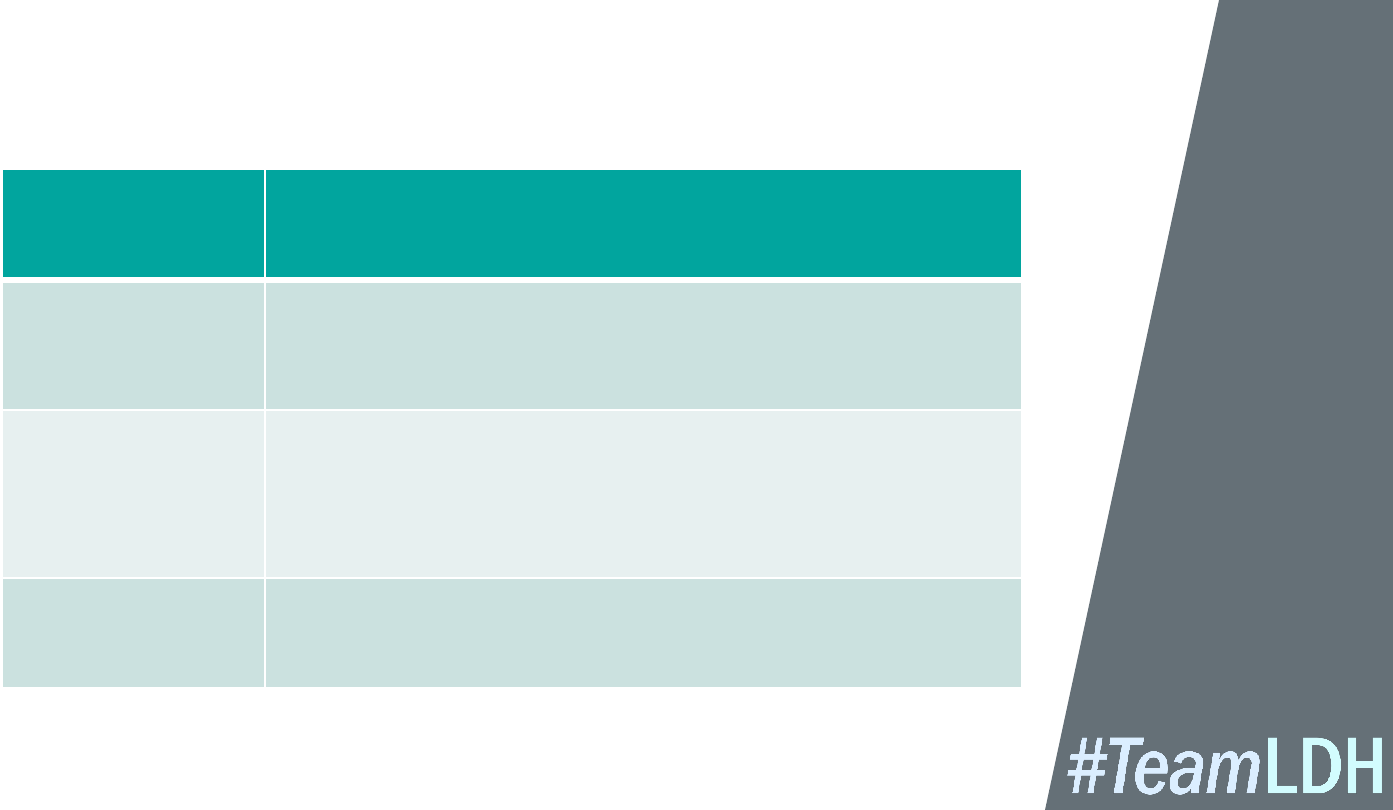
Conversion of Vocational / Day Habilitation
Service Hours to In-Home Supports
Timing What’s in the Waiver?
Before COVID
PHE
Individual’s plan of care included “approved” hours
for services in the home and for vocational / day
habilitation.
During COVID
PHE
Hours approved for vocational / day habilitation
were converted to services that could be provided
in the home due to closure of facilities and health
concerns.
6 Months After
COVID PHE
Conversion of hours will end.

Age Requirements for Direct Support
Workers
Timing What’s in the Waiver?
Before
COVID PHE
DSWs were required to be 18 years of age.
During
COVID PHE
The minimum age for DSWs was reduced to a
minimum age of 16 years old.
6 Months
After COVID
PHE
The age limit will return to 18 years of age due to
statutory requirements.

Requirement For Service in 30 days
Timing What’s in the Waiver?
Before
COVID PHE
Requirement to receive a minimum of one service
every 30 days to continue to be eligible for waiver in
the NOW and ROW.
During
COVID PHE
No requirement to receive a minimum number of
services to continue to be eligible for waiver.
6 Months
After
COVID PHE
Return to requirements of a minimum of one service
every 30 days to maintain waiver eligibility in the
NOW and ROW.

Flexibilities that Ended During COVID
• Use of virtual visits for Supported Independent Living
Service, 10 day initial home visit, waiver certification
visit.
• Extension of the 90-L “level of care” form for an
additional year.
• Temporary suspension of background check for
immediate family hired as DSWs.
• Allow immediate family members to begin working with
reduced training requirements.
• Retainer payments to providers who were under a
mandatory closure.

Medicaid Eligibility “Unwind”

Help Us Ensure No One Loses Medicaid
Coverage Who Qualifies
• During COVID PHE, states received extra federal dollars to
help ensure the health and safety of their residents, but we
were unable to remove anyone from Medicaid eligibility.
• In December 2022, federal government advised beginning
April 2023, Medicaid agencies must re-start reviewing
eligibility for members and close anyone who is not eligible.
• Over 2 million Louisiana residents on Medicaid currently.
• LDH wants to ensure everyone who is eligible maintain their
coverage.
• It is VITAL that Medicaid members make certain Medicaid has
their current mailing address, cell phone numbers, and e-mail
addresses.

How Can Residents Make Sure the Contact
Information is Up to Date
• There are several ways members can make changes or
verify their contact information.
• Log on to MyMedicaid.la.gov
• E-mail MyMedicaid.la.gov
• Call your health plan (phone number can be found on
your health plan’s ID card)
• Call Medicaid’s Customer Service hotline at 1-888-
342-6207. Hotline assistance is available Monday –
Friday from 8 am – 4:30 pm
• In-person help is available at any of the regional
Medicaid offices. To find an office closest to you, visit
www.ldh.la.gov/medicaidoffices.

What’s Next?
• The first batch of renewal letters will be mailed out at the
end of April and beginning of May. Members who are not
eligible will lose coverage at the end of June 2023.
• Mailing renewal letters will be staggered across 12 months,
and it will take 14 months to complete the redetermination
process for all Medicaid members.
• Members should watch their mail for letters from Louisiana
Department of Health, Louisiana Medicaid, or their health
plan and respond to renewals and requests for more
information.
• Members who do not respond to renewal letters or requests
for information risk losing their coverage, even if they are
eligible.

Update on HCBS Settings Rule

HCBS Settings Rule
• New requirement for states that was published in 2014
• Ensures that individuals receiving services and supports
through HCBS programs have choices in how they spend
their day, full access to the benefits of community living,
including employment and are able to receive services in
the most integrated setting.
• The deadline to be in compliance is March 17, 2023.
• Louisiana has received approval of our “State-wide
Transition Plan” that shows how we will come into
compliance.

HCBS Settings Rule
• Due to ongoing concerns with direct support workforce
crisis, we have asked for a corrective action plan which
allows for us to bring all into compliance.
• With end of PHE declaration, there is increased pressure
for compliance.
• CMS will visit all states, including provider agencies, to
assess compliance.

Introduction to Technology Supports With
Remote Features
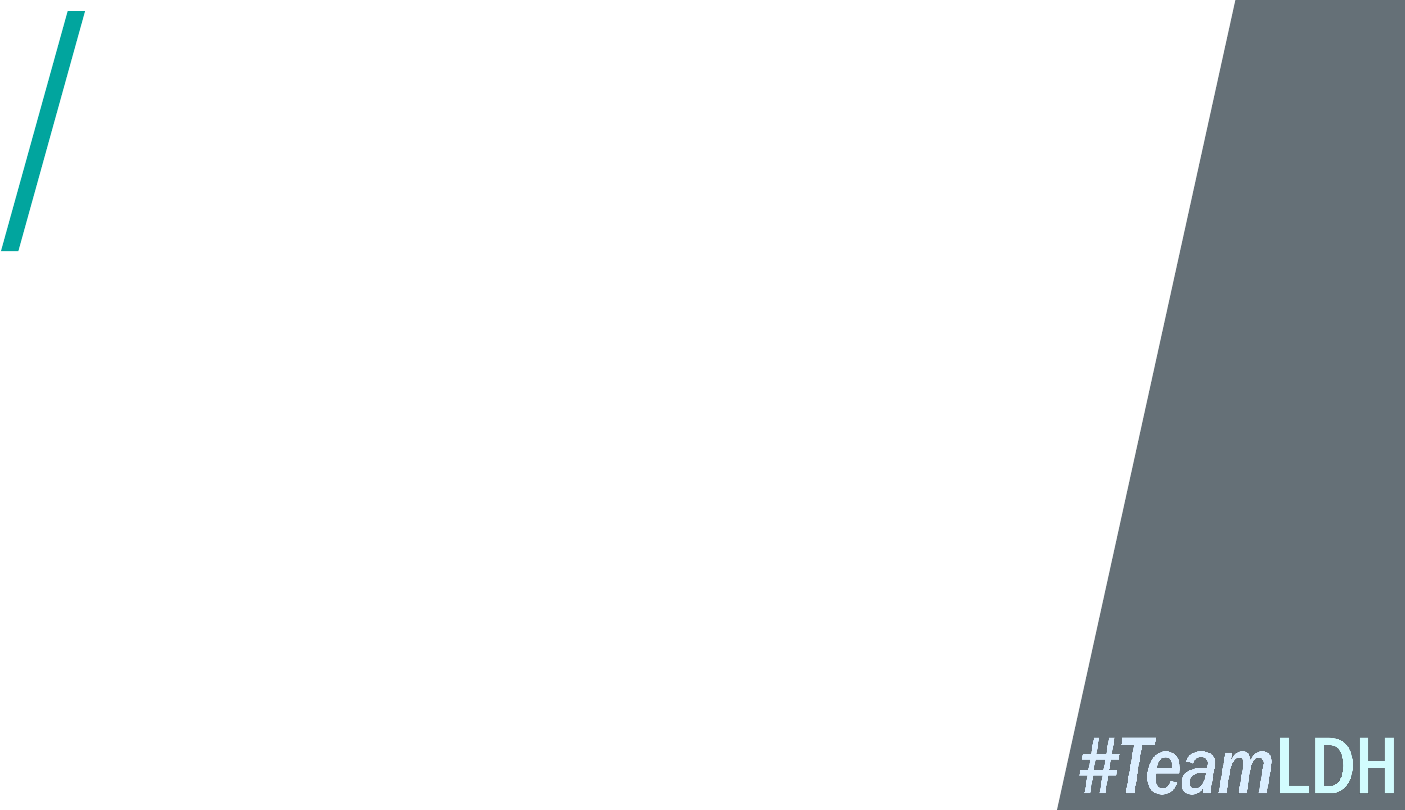
Examples of Technology with
Remote Features:
• Smart home technology
• GPS location devices to
help find someone during
an emergency
• Smart phones/ tablets/
computers & technology
applications to help
communicate, use
transportation, read, receive
appointment /calendar
reminders
• Telehealth
• Remote door locks
• Electronic medication
dispenser that tells you
when to take medication
• Emergency & medical
response support
• Remote support
caregiving
• Etc. - many other
potential options
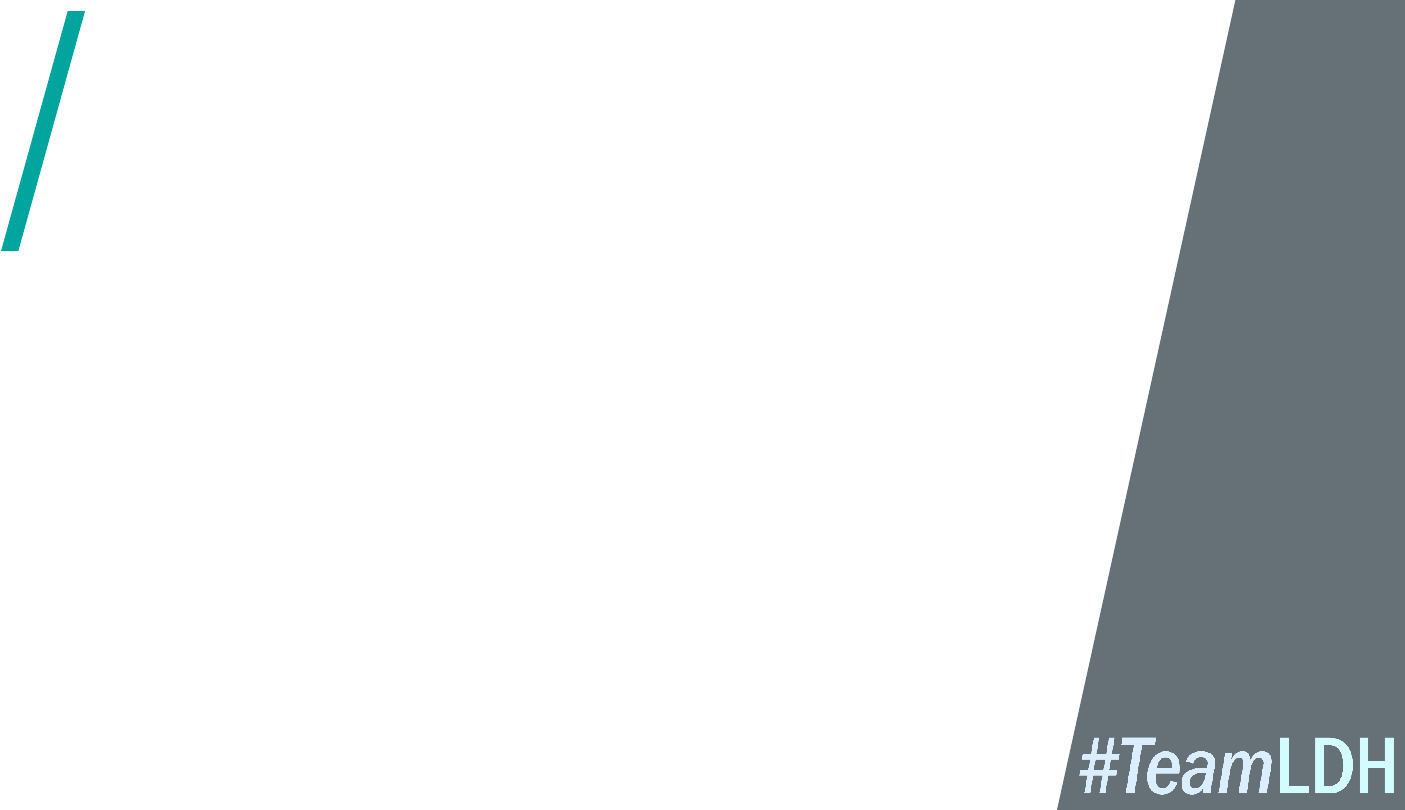
Why Might Someone Use These
Types of Support?
Potential Benefit to the
Person
• Technology is everywhere
• Build independence
• Enhance safety and security
• Improve quality of life
• Life like yours & mine –
technology is for everyone
• Individual differences –
if/when & type of technology
may vary
Potential Benefit to the
System
• DSP shortage & remote
support may free up
capacity for those who
need it the most
• Secondary benefit =
Sustainability of service
system

Planned New Services/Remote Features
• Mobile Emergency Response System- an on the
go mobile medical alert system, used in and
outside the home. This system will use
cellular/GPS technology, two-way speakers and
no base station required.
• Medication Reminder System- an electronic
device programmed to remind an individual to
take medications by a ring, automated recording
or other alarm. The electronic device may
dispense controlled dosages of medication and
may include a message back to the center if a
medication has not been removed from the
dispenser. Medications must be set up by an
RN.

Planned New Services/Remote Features
• Other equipment used to support someone remotely
may include: electronic motion door sensor devices,
door alarms, web-cams, telephones with modifications
(large buttons, flashing lights), devices affixed to
wheelchair or walker to send alert when fall occurs, text-
to-speech software, intercom systems, tablets with
features to promote communication or smart device
speakers.
• Remote Technology Service Delivery: covers monthly
response center/remote support monitoring fee and tech
upkeep (no internet cost coverage)
• Remote Technology Consultation: evaluation of tech
support needs for an individual, including functional
evaluation of technology available to address the
person’s access needs and support person to achieve
outcomes identified in the POC.

National Core Indicator Survey

National Core Indicators Survey
• National Core Indicators Survey (NCI) is a
national collaboration that helps to measure
and improve the performance of state I/DD
agencies.
• OCDD participates, along with 47 other states
by conducting surveys on a variety of relevant
topics. Surveys include:
• Adult Family Survey
• Family / Guardian Survey
• Child Family Survey
• Workforce Survey

NCI Workforce Survey – 2021 Report
• Average Wage Comparison:
LA: $9.97/hour NCI Average: $14.64/hour
• Staff Turn-over Comparison:
LA: 41.4% NCI Average: 43.3%
• Benefits: Paid Vacation
LA: 76.3% NCI Average: 75.5%
• Benefits: Paid Personal Time
LA: 50% NCI Average: 41.5%
• Benefits: Health Insurance
LA: 45.6% NCI Average: 59.9%
• Recruitment Strategy – Paid Incentive
LA: 32.8% NCI Average: 53.1%
• Retention Strategies
LA: 65% NCI Average: 68%

LDH Business Plan Update

OUR COMMITMENTS:
1) Improve the Health and Well-Being of Louisianans with an
Emphasis on Prevention
2) Reshape #TeamLDH Culture
3) Enhance Customer Service, Partnerships, and Community
Relationships
4) Promote Transparency, Accountability, and Compliance
OUR OUTCOMES:
Through strong partnerships, purposeful work, and innovative
strategies, LDH completed 95% of our 258 deliverables* and
88% of our 42 goals.
FY 2022 LDH Business Plan | Together: Building a Stronger LDH and a Healthier Louisiana

FY 2023 LDH Business Plan | Invest: Teaming up for a Stronger LDH and a Healthier Louisiana
Click HERE to view full
FY23 Business Plan
OUR COMMITMENTS:
1) Improve Health and Well-Being across the Life Span of
Louisianans
2) Support Vulnerable and Underserved Populations
3) Invest in and Empower #TeamLDH
4) Improve Performance, Accountability, and Compliance
5) Strengthen Customer Service, Partnerships, and
Community Relations
THESE COMMITMENTS ENCOMPASS:
• 18 initiatives
• 45 goals
• 253 deliverables

